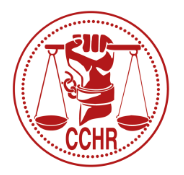Signs clearly point to Oregon community college (Umpqua Community College) shooter Christopher Harper-Mercer having had a background involving psychiatric treatment.
Harper-Mercer’s mother had difficulties in raising her son. She discussed her problems with co-worker Alexis Jefferson, telling Jefferson that she had committed Christopher to a psychiatric hospital when he wouldn’t take his medication.
Jefferson continued, “She [Ms. Harper] said that ‘my son is a real big problem of mine, He has some psychological problems. Sometimes he takes his medication, sometimes he doesn’t. And that’s where the big problem is, when he doesn’t take his medication.’ ”
Apparently Ms. Harper brought her son to the Del Amo Behavioral Health System in Torrance, California before moving to Oregon. Despite her son’s pleas to be let out of the hospital, according to Jefferson, Ms. Harper wouldn’t take him out until the doctor said he was ready to get out.
Not surprisingly, treatment at Del Amo Behavioral Health System involves:
- Individualized Case Management
- Medication Management (emphasis added)
- Recreational and Leisure Therapy
- Music Therapy
- Anger Management Group
- Psychotherapy Group
- Discharge Planning
In other words, there is very little likelihood that Christopher Harper-Mercer was not on, or in the process of withdrawing from psychiatric drugs at the time of the murders. It is recognized that withdrawal from many psychiatric medications can be just as debilitating and dangerous as taking them in the first place.
According to an article in Time Magazine online these are the top ten drugs most likely to cause violent behavior:
10. Desvenlafaxine (Pristiq) This antidepressant drug is 7.9 times more likely to be associated with violence than other drugs.
9. Venlafaxine (Effexor) This drug is prescribed for anxiety disorders. Effexor is 8.3 times more likely than other drugs to be related to violent behavior.
8. Fluvoxamine (Luvox) Antidepressant Luvox is 8.4 times more likely than other medications to be linked with violence.
7. Triazolam (Halcion) This drug can be addictive, and is used to treat insomnia. Halcion is 8.7 times more likely to be linked with violence than other drugs.
6. Atomoxetine (Strattera) Used to treat attention-deficit hyperactivity disorder (ADHD), this drug is 9 times more likely to be linked with violence compared to the average medication.
5. Mefoquine (Lariam) A treatment for malaria, Lariam has long been linked with reports of bizarre behavior. It is 9.5 times more likely to be linked with violence than other drugs.
4. Amphetamines: (Various) Amphetamines are used to treat ADHD. They are 9.6 times more likely to be linked to violence, compared to other drugs.
3. Paroxetine (Paxil) An SSRI antidepressant, Paxil is also linked with more severe withdrawal symptoms and a greater risk of birth defects compared to other medications in that class. It is 10.3 times more likely to be linked with violence compared to other drugs.
2. Fluoxetine (Prozac) The first well-known SSRI antidepressant, Prozac is 10.9 times more likely to be linked with violence in comparison with other medications.
1. Varenicline (Chantix) The anti-smoking medication Chantix affects the nicotinic acetylcholine receptor, which helps reduce craving for smoking. Unfortunately, it’s 18 times more likely to be linked with violence compared to other drugs.
Note that 8 out of 10 on this list of violence-inducing drugs are prescribed by psychiatrists, for disorders that they have described in the DSM, their bible of mental illness. Also note that the drugs are described in the present tense. In other words, they are still being prescribed, despite the risk of violence to both the user and to those in his environment.
In other words, psychiatrists have free reign to prescribe drugs at will that threaten not only your own life, but the lives of those near and dear to you.
As citizens of a free country, we have the right to demand the truth: Was the Oregon shooter a victim of violent behavior, a psychiatric drug side effect?
These drugs are proven to be deadly, yet the profitability to psychiatrists and deep-pocketed pharmaceutical giants prevents their discontinuance. This is not only inhuman, it is criminal.
Who will bring the psychiatrist to court for his behind-the-scenes participation in mass shootings?
It will have to be those without vested interests.
SOURCES:
http://www.nytimes.com/2015/10/06/us/mother-of-oregon-gunman-wrote-of-keeping-firearms.html?_r=1
http://delamohospital.com/treatment-programs/for-adults/crisis-stablization
http://healthland.time.com/2011/01/07/top-ten-legal-drugs-linked-to-violence/



0 Comments